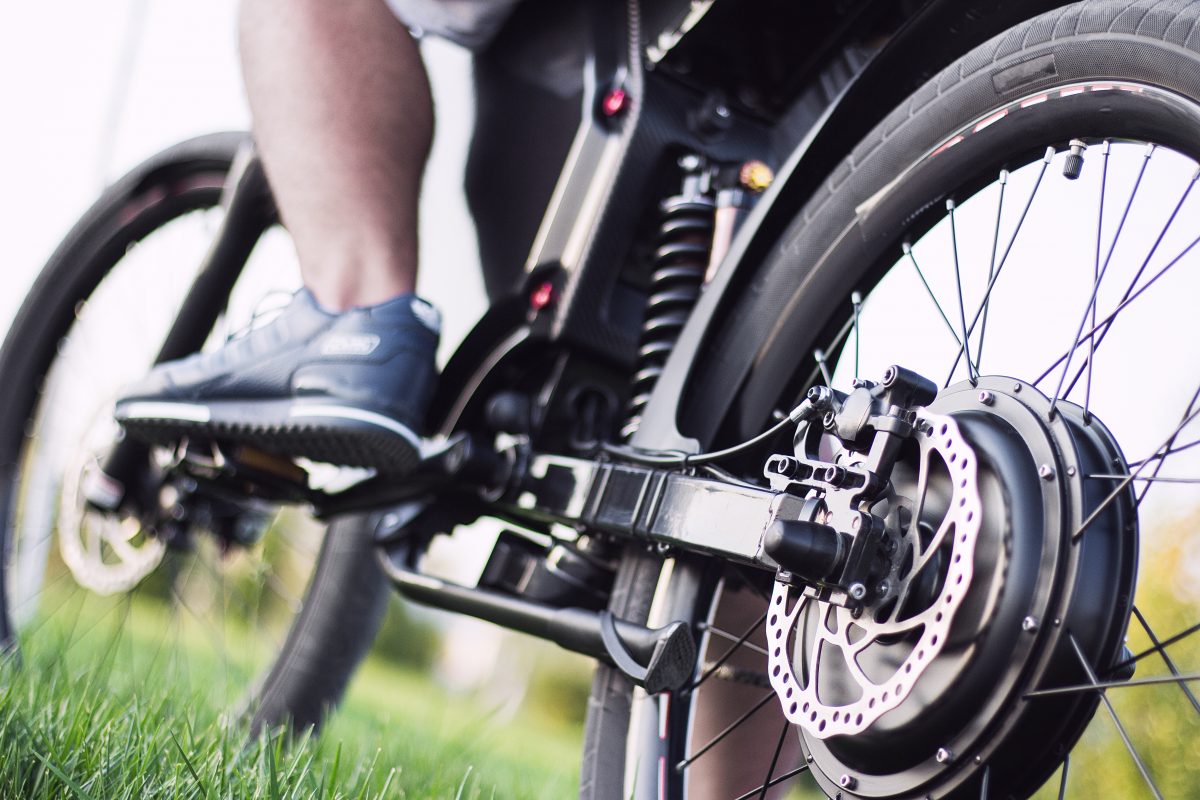Since the invention of e-bikes, otherwise known as electric-assist bikes, the cycling industry has been experiencing positive disruption. These bikes are everywhere.
There is no way on earth you would not have heard about them unless of course, you are living under a rock. There’s been a lot of debate going on about the benefits and cons of these bikes.
Some riders are a little uncomfortable with the introduction of the e-bikes into the cycling world. Some feel these bikes will close down the trails while others strongly affirm it will bring more people into the riding family. Nevertheless, both arguments have strong points.
With the rate at which e-bikes are increasing in popularity, one can assume it is here to take over the traditional bicycles. Rumour has it that some big manufacturing brands in the game have declared that e-bikes will be the leading products in years to come. In fact, many believe that e-bikes might take over the two-wheeled automobile industry.
The debate over the authenticity and functionality of these bikes is still going on. So many rumours and myths are circling. Majority of e-bike riders firmly agree that e-bikes do have a place in the market to serve different purposes. There are electric bicycles for kids, commuters, shoppers, senior citizens etc.
Since the inception of the e-bikes, it has continued to rise to fame. All over the world, it has gained popularity. Despite this, a lot of misconceptions about this particular type of bicycle have popped up time and time again. In this article, we are going to address some of the misinformation you must have come across and corrected them. Let’s delve into it right away.
Related article: Tips for Electric Bike Beginner
What are electric bikes?
When you hear the word “electric bike,” it is possible that the first thing that runs through your mind is a scooter or even a motorcycle. However, you couldn’t be more wrong. They are so different. It’s a regular bicycle with several electrical components, majorly the electric motor.
The function of the electric motor is to instigate propulsion. This is in contrast with the traditional bike where human power is required for propulsion. The electric motor’s principal function is to reduce the rider’s pedal-power. They do not need pedalling. You could if you want to, but the electric motor propels the bike forward.
They employ the use of rechargeable batteries, which are lithium-ion made. This material is responsible for the lightweight of the battery and the weight of the bike in general.
Electric bikes can travel as far as 16 to 20 miles per hour. In fact, the more high powered ones can do as high as 28mph. They can be referred to as the motor-powered version of the regular bicycles.
Related article: How an Electric Bike Works?
How do they work?
There are three major components integrated into all e-bikes available on the market. They are known as the battery, motor and controller. Also, electric bicycles have a pedal and handle just like a traditional bicycle. They basically have the same parts as a regular bike. The only difference is they have an electrical component.
While this component is meant to assist human power, it is not intended to replace it completely. Some work will still be done to pedal the bike. The advantage is that it allows you to travel over long distances without getting fatigued. Plus, you get help while riding on uneven terrain such as hills, rocky sands to make sure you have a pleasurable ride to your destination.
Let’s take a closer look at how they work by discussing the major components of an electric bicycle.
Battery
The batteries are considered one of the most critical parts of an e-bike. If you decide not to do any form of pedalling, the cell contains the power to drive you along.
Majority of e-bikes in the Canadian market have about 350 to 500-watts of power. That makes about 30 to 50 volts and 10 amps. Each state in Canada has a power limit for e-bikes. Therefore, you should definitely check that out before you start riding.
Generally, you can use any battery to power your e-bike. However, you want to use a battery that stores enough energy without being too weighty. Else, you will be using a lot of human power just to carry the battery with you. This defeats the primary purpose of riding an e-bike.
Unlike cars that make use of lead-acid batteries, e-bikes make use of lithium-ion batteries. Their batteries are quite similar to the ones used in laptops, MP3 players and mobile phones. This type of cell is employed by manufacturers to achieve an overall light frame.
Although with technological advancements, manufacturers are looking into using nickel-cadmium batteries. These batteries are of older technology but when fully charged, can travel a distance of 40 miles.
A typical e-bike battery will travel as far as 20 to 60 miles and more. However, to get more distance from your electric bike, you may need to pedal or free-wheel most of the time.
Related article: How to choose the right battery for your electric bike
Electric motor
The electric motor is by far the most crucial component of an electric bike. There are three different types of engines that can be found on an e-bike. These are:
- Front hub – These types of motors are located on the front tire. They provide propulsion by spinning the tire, thereby creating a sensation of the tires being pulled forward.
- Rear hub – Rear hub motors are located in the back tires. They provide propulsion by spinning the tire and pushing the bike forward. The ride feels pushed forward, which creates a more natural feel than a front hub.
- Mid-Drive – Instead of a hub, mid-drive motors send power to the drivetrain. It has a central location and creates more of a natural riding sensation.
Controller
The controller provides the power and torque required to spin the wheels of the bicycle. The controller which is referred to as the drivetrain in some cases allows the rider to change gears. This makes it very easy for you to pedal.
Other components include the frame and brakes. The frame is usually made from aluminum alloy to give it a lightweight feel. The lighter the structure, the lighter the overall bike weight and the further it can travel.
Also, the breaks of an electric bike are quite different from the regular bike. Some use a mechanism known as regenerative braking. In a situation where you are going downhill, the spinning wheels create a reverse effect on the electric motor, which in turn begins to charge the battery. That way, your battery is charged whenever you apply the brakes.
Related article: What motor should I use with my e-bike: Hub-motor vs. Mid-drive
Myths about electric bikes
Certain e-bike myths have become a mainstay in the e-bike world. While electric bicycles keep gaining more popular both in the mainstream and automobile world, some rumours have been generated.
These are in contrast with actual e-bike facts, and they need to be corrected. You can’t have the best electric bike riding experience in Canada if you put stock in false propaganda.
Let’s have a look at some of them:
They are superfast
A common e-bike myth is that they go way too fast. However, this is not true. This rumour stems from the fact they have electric motors. They travel at speeds similar to that of traditional bicycles. The only difference is that you can ride for longer with e-bikes.
A typical e-bike can travel as fast as 20mph, which is the average. The high-powered electric bikes can go as fast as 30 to 40 miles per hour. This speed can be attained by professionals riding conventional bikes. The fact that they have motors doesn’t make them motorcycles.
No doubt e-bikes can go as fast as 32miles per hour while moving on smooth terrain. However, when riding uphill and on rocky terrain, they are slower than regular bikes. Studies have shown that e-bikes are slower than regular bikes depending on some factors such as the terrain, the amount of power the rider is producing etc.
Also, you have to put the power generated by electric bike batteries into context. Most e-bikes on the market offer a rough estimate of 250-watt assistance. It has been reported that an average bike rider puts in an effort of 100 watts while a professional bike rider can exert a power of 400 watts. This is without the electrical component of an e-bike in play.
So you see, electric bikes are not super fast death traps like you have been made to believe. They only offer more prolonged usage, increased power, convenience and motor assistance.
Related article: Remove speed limit: can you derestrict an electric bike?
Electric bikes are too heavy
It is a known fact that an electric bike is heavier than your standard bike. However, it is not as much of a big deal as you think. What contributes and determine the overall weight of a bicycle while cycling is the weight of the rider. The rider is the major contributor to the net weight of a bike, not the bike itself.
Take, for example, you are riding a bike with loaded panniers. There is a sensation of heaviness while riding the bike. You might be convinced that the electric motor is the source of the weight. However, the weight of the electric motor is almost negligible. You will not even realize it is there.
You will not notice the difference in weight between a regular bike and an e-bike unless you are lifting both. A typical bike may weigh 30 – 40 pounds while an electric bike may weigh 40 to 45 pounds.
Some say e-bikes weigh as much as a motorcycle just because they have motors. This is for sure, an e-bike myth. An average motorcycle can weigh as much as 300 pounds which is by far heavier than a typical e-bike.
They will lead to trail closure
There is a concern for inexperienced bike riders speeding up and down the hills. E-bikes are made available to everyone. You can ride an e-bike with little or no experience.
The electric components were designed to ease the use of these bikes. However, having inexperienced riders all over the trails isn’t precisely the best.
However, the idea that electric bikes will lead to trail closure is nothing but a myth. Most e-bikes descend hills slower than your regular bike. This is due to the added weight and increased control they offer.
Majority of mountain climbers get upset with mountain riders racing down the hills on their trail. Going up the hill is not an issue. E-bikes have been designed with features that absorb shocks and level up uneven terrain. Therefore, you should not be worried that accidents involving e-bikes will lead to the closure of your favourite trails.
To avoid trail congestion, make sure to keep e-bikes off trails that specially forbid them. Ebikes are not allowed in some specific trails, and that should be respected. Soon there will be greater acceptance for e-bike, and more dual-purpose trails will be created for everyone.
Related article: Choosing a mountain e-bike: All you need to know
Electric bikes are cheating
The primary purpose of creating e-bikes is to give riders a pleasant riding experience, not to stress them out. Can you make use of your e-bike for a workout? Of course, yes. There is absolutely nothing like cheating. The pedals are still available so you can make more use of them and take a rest when needed. E-bikes allow you to be out and about, get your activities going and ride longer.
Think about it. Is it cheating to use a tool that allows you to enjoy nature, have fun, ride longer and shuttle? This myth is especially rampant among mountain terrain enthusiasts.
Electric motors make riding in mountain terrains easier, but they do not do the whole work for you. You still have to exact some human power to conquer the climb.
In the real sense, you can engage all your muscles while riding an e-bike. The only difference it has from the regular bike is that it adds to the power you are putting out.
They are motorcycles
Yes, e-bikes have motors, but this does not in any way make them a motorcycle. E-bikes offer a maximum of 350-watt assist compared to motorcycles that offer more than 50-horsepower assist.
The ratio of e-bike power to a motorcycle is 0.3 to 1. Do the math. There is no way they are the same. It is like comparing an old Volkswagen car to a Ferrari. The idea of e-bikes being motorcycles is nothing but a myth. Scratch it!
Related article: An In-depth Comparison: Electric Bike Vs. Motorcycle
In summary
The above e-bike myths create some form of uneasiness with certain individuals. These misconceptions have been going around Canadian streets and have been discouraging most people from joining this revolution.
If you are one of these people, then you should know that electric bikes don’t go as fast as people presume. They have an average speed of 20mph. They are great for older riders suffering from inactivity and people trying to lose weight. So, the impression that it is cheating is totally wrong. They are safe for kids and commuters. They environment-friendly and definitely will not lead to trail closures. Get one today!
Related article: E-bikes for Kids in Toronto




















